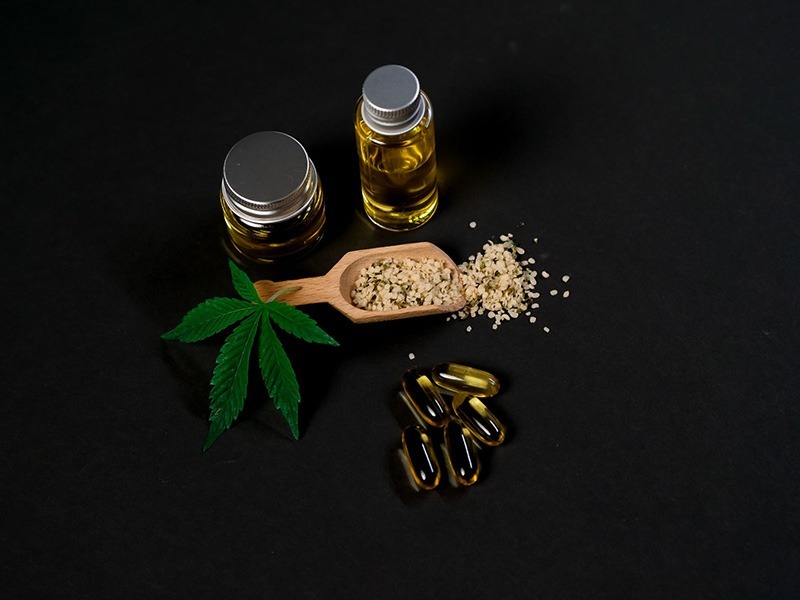Table of Contents [show]
Uncovering the Chemical Structure of CBD and Its Effects on Your Body …. Cannabidiol (CBD) is a chemical compound found in the Cannabis plant. It has been gaining much attention lately due to its many potential health benefits and therapeutic effects. But what many people don’t know is that CBD has a unique chemical structure, which gives it the ability to interact with our bodies in various ways. This article will explore the molecular structure of CBD and how it affects the human body.
CBD belongs to a class of compounds known as cannabinoids. It is one of over 100 naturally occurring cannabinoids found in cannabis plants such as marijuana and hemp. The most abundant cannabinoid in cannabis is tetrahydrocannabinol (THC). Unlike THC, however, CBD does not produce any psychoactive effects when consumed or applied topically, which is why you can easily find it by searching dispensary near me and choosing a reputable source close to you.
Now, it’s a good idea to understand this molecule better so that you have proper knowledge before consuming it.
What is the molecular structure of CBD?
The Cannabis sativa plant contains the naturally occurring substance cannabidiol (CBD). Its molecular makeup consists of 2 oxygen atoms, 21 carbon atoms and 30 hydrogen atoms. Its chemical formula is C21H30O2. Consuming CBD has no intoxicating effects because it is non-psychoactive.
When compared to a THC molecule, CBD has an extra oxygen atom, which makes it less potent. So, as opposed to THC which binds to the CB1 receptor in the brain and is responsible for producing psychoactive effects, CBD doesn’t provoke these psychoactive effects.
For that reason, CBD is often used in medical treatments, such as for the treatment of pain and inflammation. However, one should not forget that CBD can still interact with the body’s endocannabinoid system, which is responsible for regulating various bodily functions. Therefore, it’s best to consult a physician before taking CBD to ensure that it will not interfere with any existing medical conditions.
Understanding how CBD works
As mentioned above, cannabidiol (CBD) is a naturally occurring compound found in the cannabis plant. It has been studied for its potential therapeutic benefits, including reducing inflammation and pain, improving sleep quality and helping to manage anxiety and depression.
CBD works by interacting with the body’s endocannabinoid system (ECS). The ECS is responsible for regulating many of our bodily functions, such as mood, appetite, memory, sleep/wake cycles and more.
When CBD enters the body, it binds to cannabinoid receptors located throughout the ECS. This binding triggers a cascade of biochemical reactions that can lead to changes in how people feel or behave.
For example, when CBD binds to CB1 receptors in the brain, it can help reduce anxiety levels by decreasing activity in certain areas of the brain associated with fear and stress responses.
Similarly, when CBD binds to CB2 receptors throughout the body, it can help reduce inflammation which may be beneficial for those suffering from chronic pain or autoimmune disorders.
Does the chemical structure of CBD vary depending on its form (e.g., oil, tincture, edibles)?
Naturally, the answer is “yes.” Depending on the form, CBD does have a different chemical structure. For instance, terpenes, flavonoids, and cannabinoids like cannabidiol (CBD) and tetrahydrocannabinol (THC) are all present in the oil form of CBD when it is extracted from the hemp plant.
But the molecular structure of CBD might vary significantly when in edible form since some of these molecules are removed when CBD is consumed as a tincture or as an edible. Some additional components can also be found in some CBD products, like flavorings or sweeteners, which may also change CBD’s chemical makeup.
What are the potential health benefits of using CBD?
Cannabidiol (CBD), found in cannabis plants, is a compound that has gone through extensive studies for its potential health benefits. It is believed to have anti-inflammatory, antioxidant and neuroprotective properties.
As such, CBD may help reduce symptoms related to anxiety, depression, pain, inflammation and insomnia. It may also benefit people with epilepsy or other seizure disorders as it has been shown to reduce the frequency of seizures.
Moreover, CBD may help improve skin conditions such as acne and psoriasis by reducing inflammation and regulating oil production in the skin. Some studies suggest that CBD could help treat certain types of cancer by inhibiting tumor growth and reducing the spread of cancer cells.
In conclusion, there are many potential health benefits one can get from taking CBD. From pain and inflammation to anxiety and insomnia, there is no shortage of ailments this compound can help treat. As with any new treatment, talk to your doctor before starting a new therapy.
Further Reading:
CBD Products – 9 Key Considerations When Shopping For Them
Everything You Need to Know About CBD Gummies
How Effective is CBD and What is Mostly Used for?
5 Things You Should Know About Using Prescription-Free CBD Products





